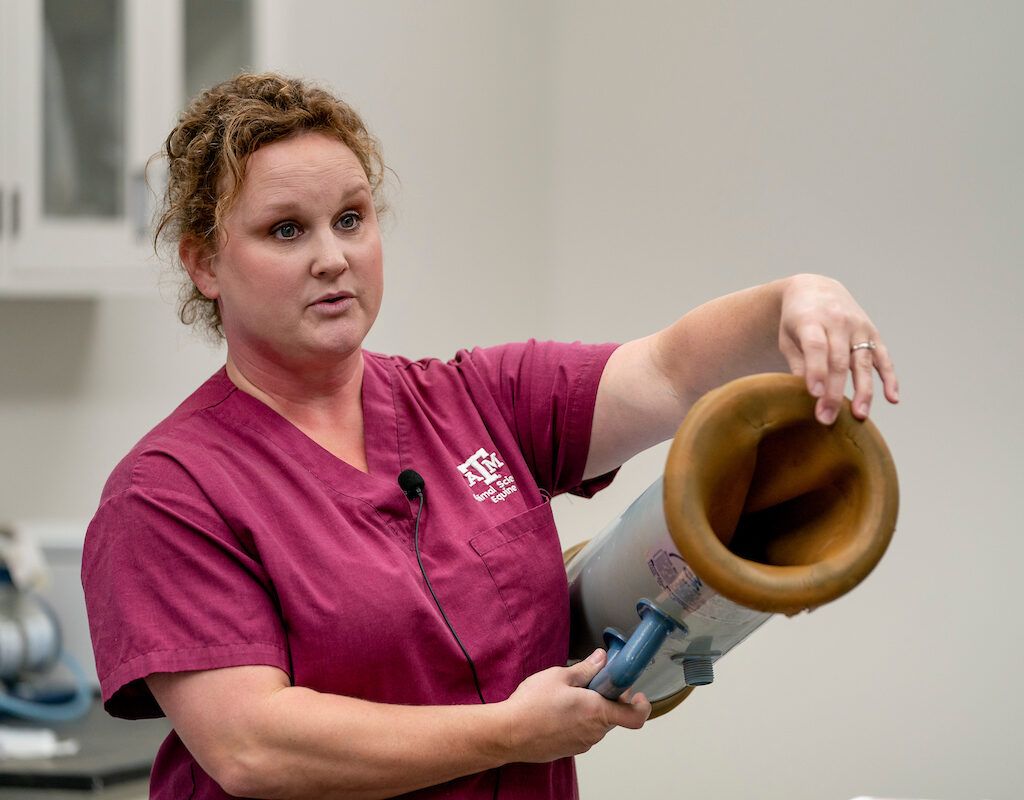Equine Reproductive Management Short Course
- Type
- Program

Topics:
Overview
Contact
7802 Turkey Creek Rd, College Station, TX 77845
The Texas A&M Equine Reproductive Management Short Course is designed for owners and breeding managers who want to learn the most efficient methods for ensuring program breeding success. The three-day course includes include classroom sessions on the anatomy and physiology of the mare and stallion, control of the estrous cycle, gestation and foaling, feeding the broodmare and young horse, and estrous cycle manipulation of mares. There are hands-on laboratory activities on a variety of equine reproductive topics as well as a broad range of topics useful to horse owners in any segment of the breeding industry.
Participation is limited to 12 individuals in order to ensure adequate time and animals for everyone to develop their skills. The registration fee includes lectures and laboratory sessions, lunch and refreshments each day, written materials, and a certificate of course completion.
More choices in Horses
- Course
In this course, horse owners and managers will learn about important topics related to managing the broodmare and foal.
- Course
Gain exclusive full access to the recordings from all three days of the 2021 short course! The Texas A&M Equine Reproductive Management Short Course is designed for owners and breeding managers who want to learn the most efficient methods for ensuring the success of their breeding programs.
- Publication
This manual explains how to evaluate horses in contests or as potential purchases.
Note: This is a paid downloadable publication. - Publication
Freeze branding of horses has many advantages. It is safe, economical, simple to do, and relatively painless. It can be done on horses of any age and does not damage the horse's hide. This publication gives complete, step-by-step instructions for freeze branding as well as information on branding systems and sites. (4 Pages)
- Publication
Horse owners know the importance of protecting their animals from disease. This publication explains how diseases are transmitted and how horses can be protected by establishing a core vaccination and a risk-based vaccination program. (8 pages)
- Publication
Texas is home to about 1 million horses, the majority of them working horses, competitive event horses and pleasure/recreational riding horses. For owners of horses that have completed their growth, knowing how to take care of their older horses can mean the difference between horses that just survive or animals that thrive. (13 pages)
